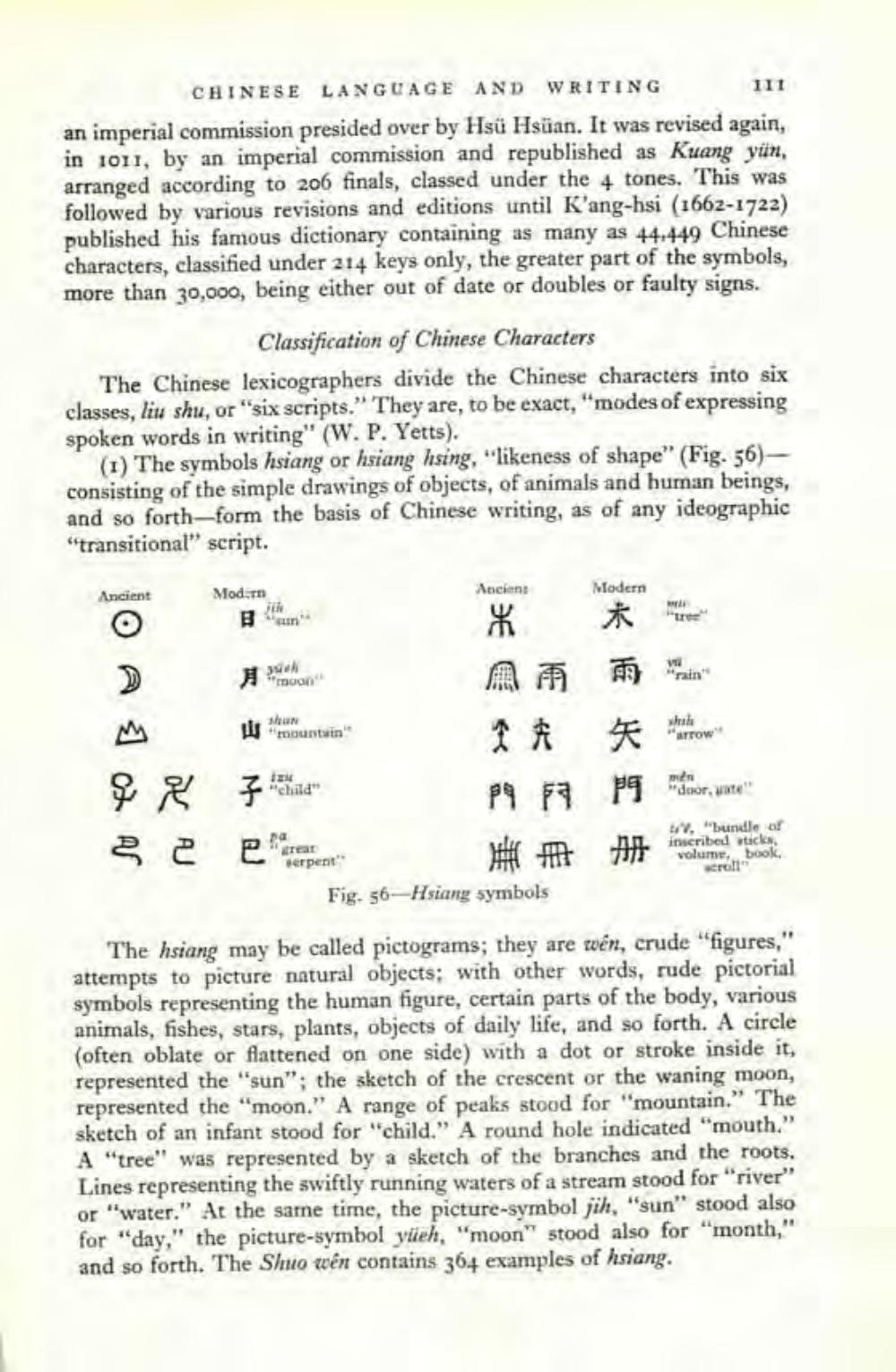________________
CHINESE LANGUAGE AND WRITING
an imperial commission presided over by Hsu Hsüan. It was revised again, in 1011, by an imperial commission and republished as Kuang yun, arranged according to 206 finals, classed under the 4 tones. This was followed by various revisions and editions until K'ang-hsi (1662-1722) published his famous dictionary containing as many as 44,449 Chinese characters, classified under 214 keys only, the greater part of the symbols, more than 30,000, being either out of date or doubles or faulty signs.
Classification of Chinese Characters
The Chinese lexicographers divide the Chinese characters into six classes, liu shu, or "six scripts." They are, to be exact, "modes of expressing spoken words in writing" (W. P. Yetts).
(1) The symbols hsiang or hsiang hsing, "likeness of shape" (Fig. 56)consisting of the simple drawings of objects, of animals and human beings, and so forth-form the basis of Chinese writing, as of any ideographic "transitional" script.
Ancient
OA 1 ∞ AS
Mod.rn
th Bun
MAJ
moon
shan
927 子
22 2
mountain
Izu "child"
great serpent"
Anciens
K
AAA
1 A
P9 F3
#
Modern
*
Fig. 56-Hsiang symbols
VI
"rain"
shah
111
矢
P9 door, wate
arrow
, "bundle of volume, book, scroll
The hsiang may be called pictograms; they are wen, crude "figures," attempts to picture natural objects; with other words, rude pictorial symbols representing the human figure, certain parts of the body, various animals, fishes, stars, plants, objects of daily life, and so forth. A circle (often oblate or flattened on one side) with a dot or stroke inside it, represented the "sun"; the sketch of the crescent or the waning moon, represented the "moon." A range of peaks stood for "mountain." The sketch of an infant stood for "child." A round hole indicated "mouth." A "tree" was represented by a sketch of the branches and the roots. Lines representing the swiftly running waters of a stream stood for "river" or "water." At the same time, the picture-symbol jih, "sun" stood also for "day," the picture-symbol yüeh, "moon" stood also for "month," and so forth. The Shuo wên contains 364 examples of hsiang.




